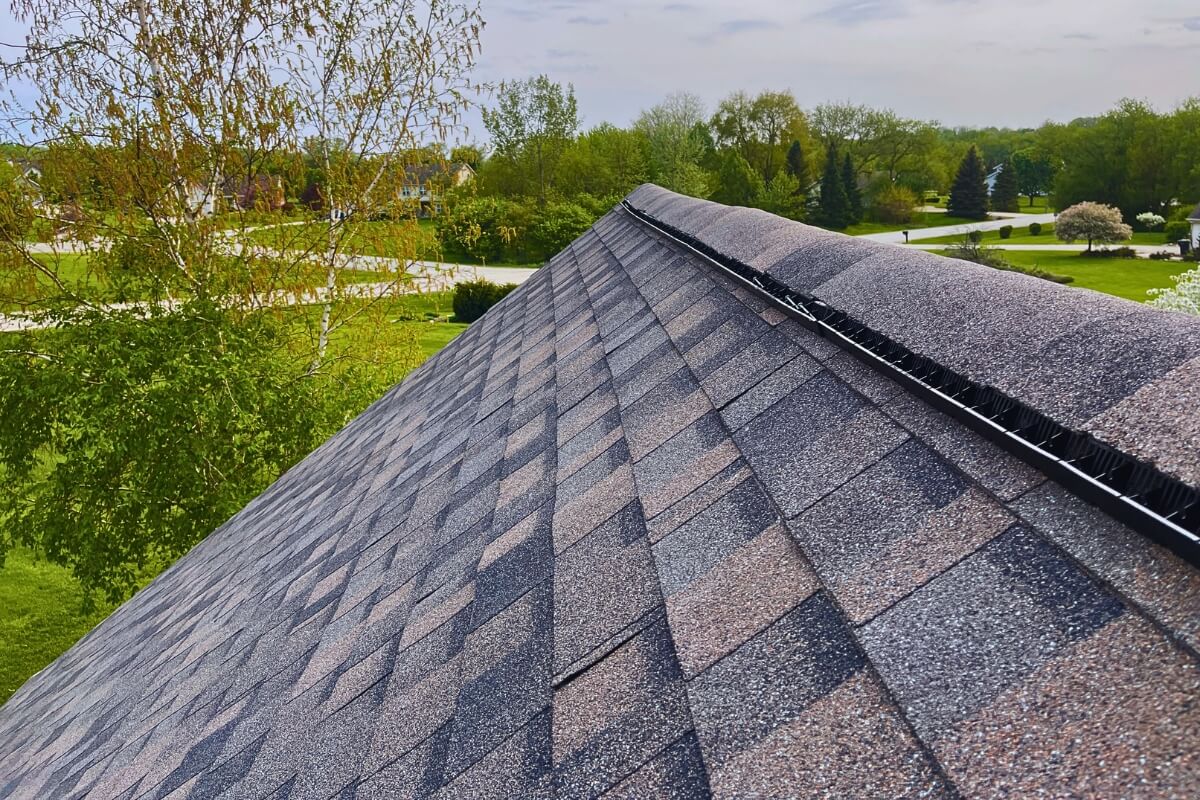
Preserving an asphalt shingle roof in Wisconsin can be challenging due to the state's diverse climate. With harsh winters and sunny summers, homeowners face a complex puzzle to ensure their roof's durability. Every component plays a vital role in safeguarding the roof against the full spectrum of seasonal changes that can put it to the test.
In this article, we will take an in-depth look at each of the shingle's compositions, illustrating how they interact and cooperate to maintain their impeccable condition across every season of the year. Safeguarding your roof and maintaining it in excellent condition is a journey of protection and care that ensures your home remains a steadfast sanctuary against nature's unpredictability.
One of the most beloved roofing materials among homeowners is the asphalt shingle. It's a choice that seamlessly blends functionality with aesthetic appeal. These shingles come together through the seamless integration of three fundamental components:
1. Fiberglass Mat (Base Material) - The foundation of an asphalt shingle is a strong and lightweight fiberglass mat. This mat provides structural integrity and forms the base upon which the rest of the shingle components are applied. Fiberglass mats are preferred in modern asphalt shingles due to their excellent strength, fire resistance, and resistance to moisture. They help the shingle maintain its shape and resist warping or curling over time.
2. Asphalt Coating - The asphalt coating serves multiple functions. First and foremost, it is responsible for waterproofing, preventing water from infiltrating your roof. Asphalt also acts as an adhesive, helping the granules adhere to the shingle's surface and holding the entire structure together. The asphalt mixture often includes mineral fillers and modifiers to enhance its performance. These modifiers can improve the asphalt's flexibility, durability, and resistance to temperature fluctuations and UV radiation. Different types of asphalt formulations are used to meet specific performance requirements.
3. Surface Granules - The surface is embedded with mineral granules. These granules serve several critical purposes:
For homeowners in Wisconsin, properly caring for the three components of asphalt shingles can help ensure the longevity and effectiveness of your roofs. Here are some helpful tips on preserving these components:
1. Fiberglass Mat (Base Material)
Prevent Structural Stress - In winter, it's essential to be cautious of heavy snow accumulation on your roof. Safely removing excess snow with a roof rake is recommended to prevent excessive stress on the fiberglass mat. Snow buildup can add substantial weight to the roof, and if not managed, it may lead to structural strain, potential damage, or even leaks. Using a roof rake can help distribute the weight and reduce the risk of these issues.
Regular Inspections - Regular inspections of your roof are vital to detect potential issues early. During these inspections, carefully examine the shingles for signs of damage, such as cracks, curling, or warping. If you spot any problems, addressing them promptly is essential to prevent more extensive damage to the shingle mat and the roof's underlying structure. Timely repairs can help maintain the structural integrity of the shingles and extend the lifespan of your roof.
2. Asphalt Coating
Periodic Cleaning - Over time, the surface of your shingles may gather debris, dirt, and even algae, which can gradually deteriorate the integrity of the asphalt coating. To preserve your shingles' cleanliness and overall quality, it's advisable to explore professional roof cleaning services or utilize specialized cleaning solutions. These options can effectively remove contaminants, ensuring the longevity and performance of your roof.
Flashing and Seal Checks - Regularly inspect and maintain the flashing around chimneys, vents, and other roof penetrations. Ensure that they are adequately sealed to prevent water infiltration. When the flashing and seals around roof penetrations are compromised or not properly maintained, they create opportunities for water to infiltrate your roof's underlying structure. This is particularly problematic for the underlying asphalt coating of the shingles.
3. Surface Granules
Moss and Algae Control - In Wisconsin's humid climate, moss and algae can grow on your shingles, causing granule loss. When used correctly, options like chemical roof cleaners, zinc strips, and professional pressure washing are generally safe for your roofs in order to prevent moss and algae growth.
Preventative measures such as trimming branches and keeping your gutters clean are safe practices. Algae-resistant shingles are explicitly designed to be safe and effective for long-term moss and algae prevention. It's advisable to follow recommended guidelines and consult with professionals when necessary.
Understanding the three crucial components of asphalt shingles and implementing proper maintenance practices can significantly enhance the longevity and performance of your roofing system. The fiberglass mat, asphalt coating, and surface granules work in harmony to provide structural integrity, water resistance, and protection from UV radiation. For homeowners in Wisconsin, where the climate poses unique challenges, it's essential to take proactive steps in caring for these components. Regular inspections, safe snow removal, cleaning, and vigilance in protecting the asphalt coating and granules can help safeguard your investment.
However, it's also important to recognize when it's best to consult with roofing professionals who have the expertise to ensure your roof's safety and structural integrity. By taking these steps, you can enjoy your roof's practicality and aesthetic appeal while keeping your home well-protected.